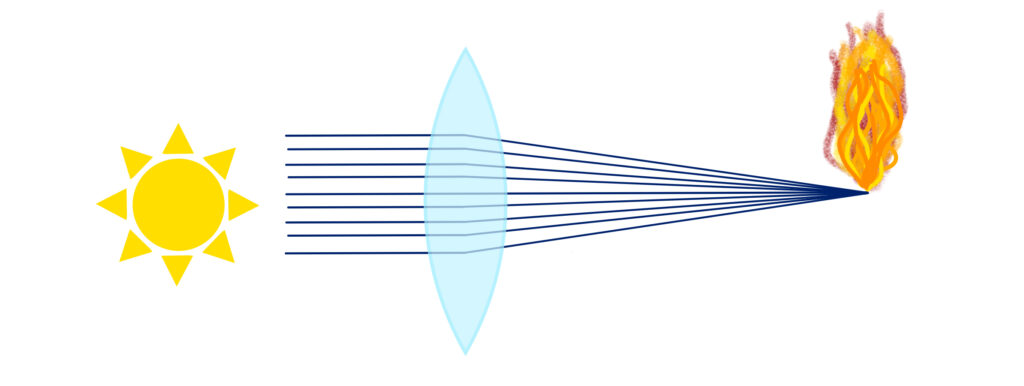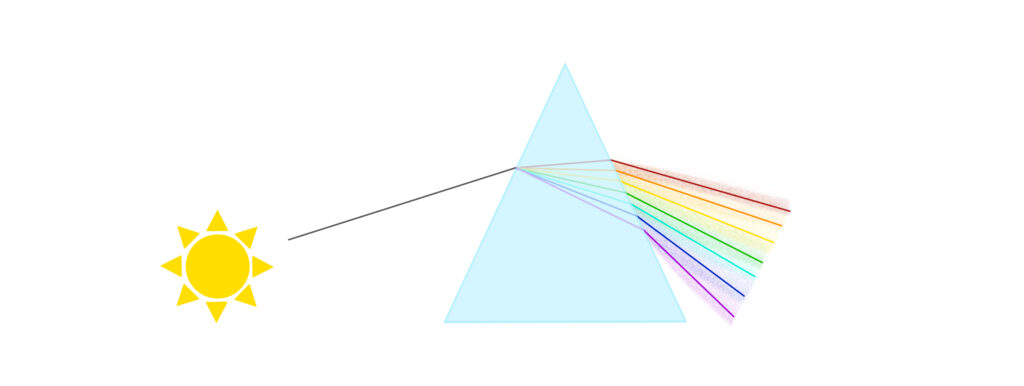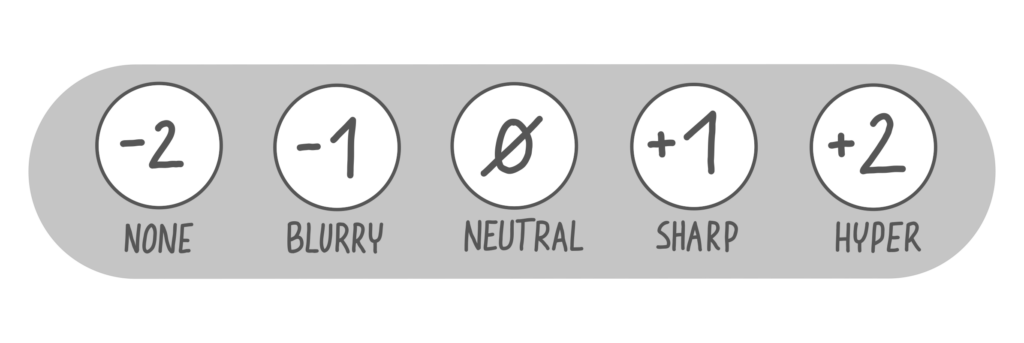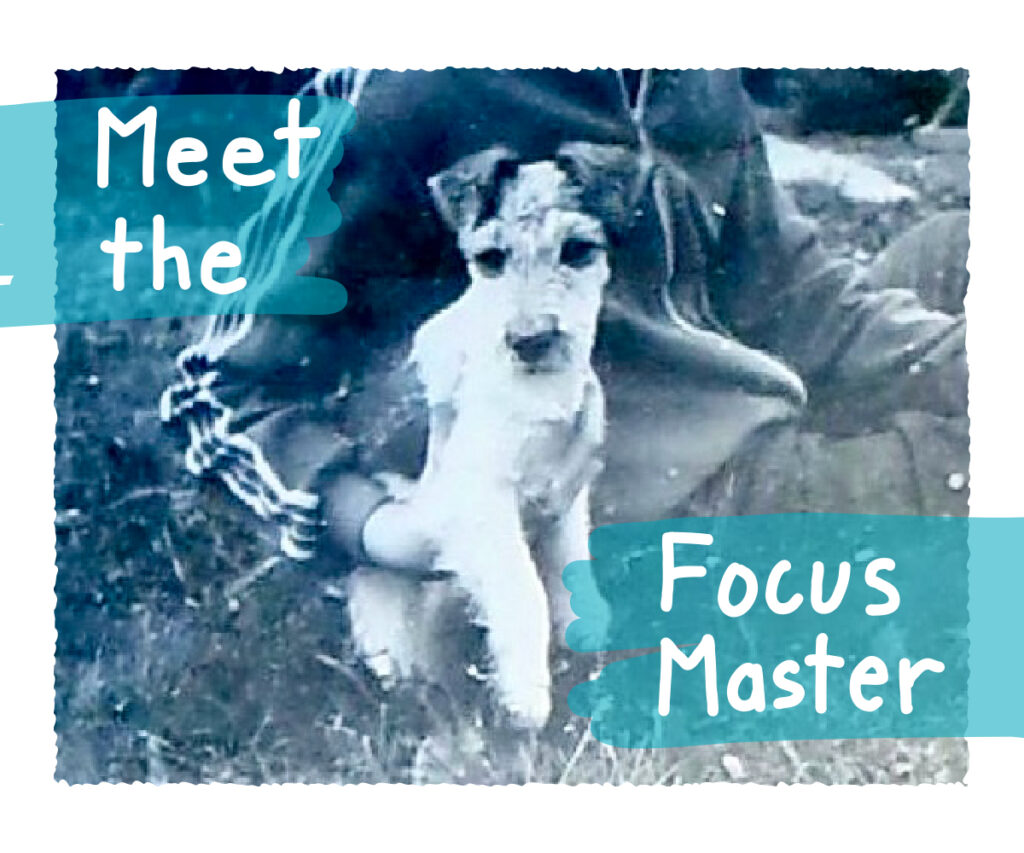Focus, a Multipurpose Tool
Did you ever consider actively managing your focus as a mental state?
If so, then this article is for you.
Learn about the 5 stages of focus and how they can be good or bad for your performance.
This post is part one of a series. Stay tuned for more to come.
The 5 Stages of Focus and How They Can Be Good or Bad
I must focus…!
If only I could…
To get things done, you need to focus, right?
Or do you?
What is “Focus”?
The word is of Latin origin. It meant hearth or fireplace; in this sense, it represented the central area of a house.
Scientists like Euclid, Kepler, Galilei, and Newton studied focus in optics, astronomy, and mathematics, describing it as the location of converging light or the center(s) of planetary rotation and geometric curves.
Since then, the term has entered the realm of psychology, and the word is emphasized extensively in discussions about productivity and getting things done.
Building on these concepts, let’s define focus:
Focus is the main area of your mental space, the location where thoughts converge, and the core of your attention.
To Focus or Not to Focus?
There are two opposing viewpoints on the value of focus, and both have their merits.
“Focus!”
Focus is a cornerstone of productivity. Cal Newport explores this idea in his bestselling book Deep Work: Rules for Focused Success in a Distracted World. He advocates for uninterrupted, concentrated work as a prerequisite for sustainable progress and success.
Focus – a state of deep concentration – is also a key ingredient for a “Flow” experience, as described by Mihaly Csikszentmihalyi in his seminal book Flow: The Psychology of Optimal Experience. Csikszentmihalyi highlights several factors contributing to flow, such as maintaining the right balance between challenge and skill, and the autotelic nature of the activity – finding intrinsic value in the act of doing itself. There are many compelling reasons to focus. On the flip side, there are just as many compelling reasons not to focus.
“Don’t focus!”
The benefits of non-focus were first explored in the 1920s by Graham Wallas in his book The Art of Thought where he identified “incubation” as the second step in his four-step approach to creative thinking.
Daniel Kahneman, in his groundbreaking book Thinking, Fast and Slow, discusses the advantages of what he calls “System 1” thinking – spontaneous, intuitive, and unfocused. This type of thinking can save time and energy, allowing you to quickly draw on your existing knowledge.However, Kahneman also emphasizes the importance of activating “System 2”, which requires deliberate focus and concentration to avoid jumping to premature conclusions and falling prey to cognitive biases.
And so, the loop closes, returning us to the call: “Focus!”
To Focus or Not to Focus – Continued
So, you are confused again.
Should you let your gut make decisions and let your mind wander to foster creativity?
Or should you focus deliberately on your actions and decision-making to move forward toward your objectives?
Or perhaps you should focus first and then let go – or is it the other way around?
The answer is – yes, you guessed it – “it depends”.
Focus is essential for moving forward in a determined direction, to avoiding distractions, and managing overwhelm.
It’s also an incredibly effective way to simplify.
If you focus rays of light through a convex lens, you can create a flame where they meet.

Non-focus, on the other hand, is fertile ground for innovation, problem-solving, and creative thinking. To discover new paths, you must leave the old ones behind.
If you diffuse rays of light through a prism, you can create a rainbow.

The 5 Stages of Focus – a Framework
Can we influence focus? Can we “manage” focus? And if so, how?
To start answering these questions, let’s explore focus a little further, unpacking its dimensions and perspectives.
Let me offer a framework to help structure our understanding.
The Quantitative Dimension of Focus: Intensity
While I wouldn’t go as far as to suggest measuring focus precisely (it’s hard to imagine a reliable unit of measurement for it), I do believe we can compare mental states in terms of “more” or “less” focus.
In this sense, we can place “focus” on a spectrum that illustrates the intensity of mental concentration – from a wandering mind to one that achieves full focus.
This gives us the quantitative dimension of focus: how much focus we’re applying, ranging from none to hyperfocus.

Let’s define these stages briefly (we’ll explore them in more detail later):
Stage -2, Non-focus: A complete absence of direction, an aimless mind-wandering
Stage -1, Blurry focus: A general sense of direction with openness to external signals
Stage 0, Neutral focus: A balanced state, distributing mental resources across various areas
Stage +1, Sharp focus: Full concentration with healthy boundaries
Stage +2, Hyperfocus: An extreme state of concentration where awareness of space and time fades
At this point, you might feel an urge to judge and gravitate toward a particular stage – likely toward the right side of the spectrum. That’s understandable – you want to get things done, right?
But before you choose a favorite, let’s explore the qualitative dimension of the focus framework.
The Qualitative Dimension of Focus: Usefulness
The quantitative scale alone is not sufficient to manage focus effectively. We also need to consider the qualitative dimension – the usefulness of focus.
Dependent on what you’re focusing on, any stage of focus (blurry, neutral, or hyper) can be either good or bad.
Think of the lens and the prism:
Focused rays of light can ignite a flame, a clear and intense result.
Diffused rays create a rainbow, a vivid spectrum of possibilities.
And so, we arrive at our framework:

Next, we will dive deeper into each stage, examining when focus (or the lack of it) can be beneficial – and when it can be detrimental.
Stage -2: No-Focus
No-focus is a complete absence of direction, an aimless mind-wandering.
What No-focus Looks Like
The story is overquoted and somewhat cliché – but it’s a perfect illustration of aimless non-focus, so I’ll use it anyway. It comes from the children’s classic Alice in Wonderland, a rich source of vivid metaphors and playful wisdom:
“Would you tell me, please, which way I ought to go from here?”
“That depends a good deal on where you want to get to,” said the Cat.
“I don’t much care where,“ said Alice.
“Then it doesn’t matter which way you go,” said the Cat.
If you are wandering aimlessly, it does not matter where you go.
At this moment, such aimlessness might feel like a luxury – like freedom and exploration. But at other times, it can feel desperate and exhausting, especially when you need to get somewhere, but all paths seem to lead nowhere.
How No-focus is Good
No-focus is a secret weapon for relaxing the mind, freeing it from limitations and pressure.
Like a liquid without a container, your mind can flow freely, guided by intuition or subtle external cues.
No-focus saves energy, as thoughts follow their natural gravitation.
It invites serendipity, allowing you to pick up signals you’d otherwise miss, unlocking uninhibited creative freedom.
No-focus can help you unwind, recharge, and enjoy the present moment. It clears mental clutter, creating space for subconscious processing and discovery
How No-focus is Bad
Conversely, non-focus can lead to chaos, confusion, and unproductiveness.
Deadlines are missed, tasks go undone, and performance suffers – potentially harming careers and relationships. A lack of focus can leave you feeling lost, as if every path ends in dense fog, eroding your sense of purpose
In practical situations, non-focus can even be dangerous, like when driving or navigating hazardous physical environments – you should concentrate on every step rather than risk falling off a cliff.
A lack of focus can also harm relationships, as missed emotional cues and neglect create disconnection and a sense of indifference, leaving your partner feeling unloved or unimportant.
Stage -1: Blurry Focus
Blurry focus is a state where your mind has a general direction but remains open to signals from the periphery.
What Blurry Focus Looks Like
I was honored to attend a coaching session as an observer, led by a hypnotherapist helping a client quit smoking.
The therapist carefully prepared the setting – arranging the chairs, inviting the client to sit, and positioning himself at a slight angle on their side
Before beginning the conversation, he made a deliberate gesture: he removed his glasses.
This caught my attention, and I later asked him why. His response surprised me: “When I take off my glasses, the client becomes blurry. This helps me concentrate fully on my other senses – listening to what they say and feeling their presence.”
By blurring his vision, the hypnotherapist sharpened his other senses.
How Blurry Focus is Good
A blurry focus allows for peripheral vision – you notice what’s happening at the edges of your attention.
When searching for ideas and solutions, a less focused state helps you catch subtle opportunities you might otherwise overlook: a quiet moment, a faint voice, a fleeting thought
Have you ever experienced the moment when your eyes glaze over, and you find yourself present and absent at the same time? In these moments, you enter a light creative trance, open to new input and seeing beyond the obvious
Blurry focus is particularly useful in the early stages of problem-solving and brainstorming. It fosters an environment of creative ambiguity, inviting surprising ideas outside the usual mold
Sometimes, you see better with your glasses off.
How Blurry Focus is Bad
Blurry focus can also be problematic. It’s a state of inconsistent concentration, where distraction or lack of clarity prevent sustained progress. This can lead to subpar performance
When your focus is blurry, you may see general outlines but lack the clarity to define shapes and boundaries. This can leave you feeling disoriented, indifferent, or low-energy and drained.
There is a risk of wasting creative efforts by getting stuck in repetitive patterns or drifting into aimless action. With blurry focus, solving complex problems becomes even harder, often stalling progress or preventing meaningful breakthroughs
In practical terms, blurry focus can be harmful. For example, worry – a form of unfocused fear – can consume your thoughts without leading to action, trapping you in a cycle of rumination and negativity. Similarly, multitasking often results in blurry focus, wasting creative energy on constant switching rather than meaningful progress.
Stage 0: Neutral Focus
Neutral focus is a balanced state of mental engagement, with your attention evenly distributed across various causes or tasks.
What Neutral Focus Looks Like
When I was assigned to lead a team designing the application architecture for a large financial institution’s digital transformation, I was invited to the architecture team’s weekly meeting on the second day of this engagement. This group consisted of highly skilled, passionate, and ambitious individuals who had been debating for months without resolving the complex issues they faced
My role was to guide this powerhouse of expertise toward actionable decisions for the project’s roadmap.
In that first meeting, the drama unfolded.
There was a lot of expertise in the room – and all of it demanded to be heard at once
The discussion ricocheted from “the problem with account numbers” (a deeply rooted issue in the data model) to “the end-of-lifecycle situation in Asia” (adding global complexities) to “the strategic decision required before purchasing new software” (opening yet another Pandora’s box)
Oddly enough, my lack of familiarity with the details being discussed turned out to be an advantage. While the experts argued, I focused on the big picture, shifting between perspectives as different speakers took the floor
Instead of asserting authority or imposing my ideas, I quietly sketched the discussion on a whiteboard. The data model, geographies, strategic scenarios – all the dimensions of the problem took shape as I listened and organized my thoughts
Then something magical happened
With every word I wrote and every line I drew, the room grew calmer. The heated debate shifted as people redirected their focus from opposing others on minor detail to observing the big picture unfolding on the board.
My neutral focus helped diffuse the tension, build trust in the process and encourage genuine collaboration.
How Neutral Focus is Good
In professional settings, a neutral focus is invaluable for facilitating group discussions or mediating conflict
You’re not taking sides, but are open to all inputs and arguments, able to act as a neutral source of trust for all parties involved.
In conversations or relationships, a neutral focus helps establish a state of comfortable attention. In personal contexts, it allows for a relaxed state of companionship and rapport
Neutral focus is a balanced, moderate degree of focus. It can be the sweet spot for consistent and sustainable performance, as you are concentrating, but not with overwhelming intensity. You can move forward steadily, with ease and flow, shifting between periods of stronger and lesser focus
Neutral focus is a good state to be in for most routine tasks, such as answering emails or cleaning the house. You are attentive enough to do the job well, but not so focused that you become fatigued
When you’re in the early stages of learning a new skill, such as playing an instrument, neutral focus is ideal. You’re paying attention but still relaxed enough to enjoy the learning process.
How Neutral Focus is Bad
Neutral focus does not particularly drive you to move quickly. You might lose momentum and drive. In competitive settings or ambitious environments, such as exams or sports, neutral focus can lead to lackluster performance
It might also be paired with a lack of passion. A project might feel lukewarm and unappealing, causing you to get distracted and lose interest. Abandoned projects are sunk costs that cannot be recovered
Neutral focus can drift into toxic indifference. “Not taking sides” becomes harmful when you must stand up for your rights – or those of others. Setting clear boundaries is impossible in a neutral state. Neutral focus and passion don’t mix well.
Stage +1: Sharp Focus
Sharp focus is a state of full concentration with healthy boundaries.
What Sharp Focus Looks Like
You know the situation: you have 10 weeks to complete a project, and after 8 weeks, you realize that although you’ve worked somewhat consistently every day, nothing is really finished. The deadline is fast approaching, and there’s no way you can miss it
Well, this is when sharp focus will save your butt. It’s amazing what you can accomplish under sharp focus
At work, we use the expression “going into the tunnel” to signal that the person will fully focus on the work that needs to be done. They won’t respond to messages or attend random meetings during this time. This helps with progress and expectation management.
Sharp focus means tuning out distractions and getting things done.
How Sharp Focus is Good
Sharp focus is the stage where you concentrate intensely on a single task or goal, eliminating distractions and disturbances, yet remaining open to useful signals from the outside to stay connected and flexible.
Sharp focus is the opposite of (and antidote to) multitasking, removing switching costs as much as possible, and thus investing energy into deliberate progress. When in sharp focus, you achieve sustainable productivity and steady advancement on your chosen path.
Sharp focus is one of the key ingredients of Flow, a deeply satisfying experience that leads to joyful immersion in an activity and a sense of purpose. Flow opens up opportunities for growth, as it means working at the edge of one’s abilities and extending them toward higher levels. The best work is often done in a state of Flow.
In conversations and relationships, sharp focus means full presence and attention to the other person, which is a precondition for deep personal rapport.
Finally, sharp focus is essential for doing precise, high-quality work wherever attention to detail is required.
How Sharp Focus is Bad
There are downsides to sharp focus when overdone and sustained too long without breaks. This can lead to physical and mental exhaustion and, in extreme cases, burnout. In high-stress professions, teams often “pull an all-nighter” as a sign of commitment to high performance and dedication. This, of course, is short-sighted, as it neglects personal health and long-term performance.
Since attention is a finite resource, focusing on one thing automatically means neglecting something else, whether it’s health, personal relationships, or family.
Anyone living with a workaholic partner can testify to this problem. Studies confirm the correlation between divorce and workaholism.
There is also a qualitative aspect to consider. A sharp focus on a single outcome or line of thought can lead to oversimplification or superficiality when the situation demands broader considerations for a well-rounded solution or more exhaustive argumentation. Sharp focus turns negative when it leads to narrow-mindedness or deliberate cognitive myopia.
And this consideration leads us to the most intense form – Hyperfocus.
Stage +2: Hyperfocus
Hyperfocus is an extreme level of concentration where the mind becomes so absorbed that there is no mental capacity left for awareness of space or time.
What Hyperfocus Looks Like
I’m looking down into this giant hole, earth, dirt, and sand flying up and into my face. Down there, deeper than the length of his own body, is our Fox Terrier, Billy.
Billy is… digging.
Sniffing, then digging deeper. He is blind and deaf. All my calling does not help. He is hyper focused on something he smelled before – maybe a mouse, who knows? He is hyper focused on his “work” of chasing that mouse, turning our lawn into a construction site, and digging a hole that might just come out the other side – somewhere in the Australian outback.
Billy is digging, no matter what.

How Hyperfocus is Good
Hyperfocus can lead to – literally – “digging through a task at record speed,” allowing for maximized progress. It enables the bundling of resources to the fullest extent, which is especially useful in situations of danger or crisis. The mind becomes blind to anything unrelated to the task at hand. Imagine “survival.”
It is also a state of laser-like concentration, where one’s attention and senses are maximized, enhancing perception and attention to detail. I would want my heart surgeon to hyper-focus on the operation, please!
Hyperfocus can be the steppingstone to higher levels of creation. Creative masterpieces or scientific discoveries have emerged from passionate, intense, all-consuming phases of hyper focused work, where the artist or scientist immersed themselves fully in the project, forgetting time and even themselves in the process.
How Hyperfocus is Bad
Of course, hyperfocus is not sustainable. Forgetting to eat and sleep leads not only to exhaustion but ultimately to destruction. If focus causes you to neglect your health, resources won’t be refreshed and rebuilt; instead, they will be drained from both body and mind. Hyperfocus can be useful in the short term but becomes toxic if sustained over long periods.
Raise your hand if you’re a parent who regrets missing your baby’s first steps. Or if you’ve spent your best friend’s wedding – fully dressed in your bridesmaid’s dress – working on your laptop in a hotel room. Hyperfocus on work causes you to miss unique moments in your relationships, ignoring communication cues and the needs of your loved ones.
And then there’s addiction. Hyperfocus can absorb you so completely that the thing you focus on becomes the center of your universe, pulling you further down a rabbit hole and occupying more and more of your mind and physical space. Think of the addicted gamer or the passionate collector. There’s a blurry line between passion and obsession. Those who have had a stalker know what hyperfocus means when you unwillingly become the center of it.
Hyperfocus is bad if it is a marriage between rumination, where all thoughts go in endless circles without escape, and fixation, where all rumination leads to the same and only valid result.
Here we go – our focus framework is complete. We now have a systematic structure to navigate our own relationship with the different stages of focus, along with a deeper understanding of how focus can be useful or harmful at any stage.

Now… what’s next?
If you realize that you are (sometimes, usually, or too often) stuck in a certain stage of focus, and this is NOT helpful, how can you get out of this stage and move to a more productive state?
In the second part of the focus series (click here to read it), in the next article, we will explore ways to shift between the different stages so that you can gain more flexibility in managing your mental resources.
Get in Touch
What’s on your mind today? Share your thoughts and let’s connect.

